► Smart enters the D-segment SUV market
► The Brabus packs in 637bhp
► And 0-62mph in just 3.8 seconds
Every day Smart strays further from the affordable, compact city car – and the #5 is biggest departure from the original formula yet. The third model from the new-look Smart, it’s a D-segment SUV that promises to take drivers ‘beyond urban,’ and does so with more than a whiff of Land Rover. It’s also the first D-segment SUV from the brand.
But despite now measuring a titanic 4.7-metres in length, Smart is confident the #5 stays true to the brand values put down by the ForTwo and FourFour – let alone the #1 and #3 – whilst tapping into a more profitable, luxury-orientated sector.

Is it a stretch too far? We drove the range-topping Brabus edition around Portugal to find out.
At a glance
Pros: Cool, robust styling sets it apart. Interior nice too.
Cons: Poor efficiency, Smart assistant isn’t smart
What’s new?
Smart remains a partnership between Geely and Mercedes Benz, with the latter responsible for design and the former taking care of hardware. Stuttgart has come up with a more handsome and cohesive design for the Smart than some of its in-house cars, and the result something that looks both handsome and rugged in equal measure – though toned down compared to the concept car.
The theme is ‘beyond urban’ and that’s evident in the car’s squared off looks. It’s also evident in a new light signature, which remixes the continuous light bar of the #1 and the #3 into four oblongs which make everything look very utilitarian. It’s a good-looking car on the road, and it wears its 4.7-metre length and substantial 1920mm width well.
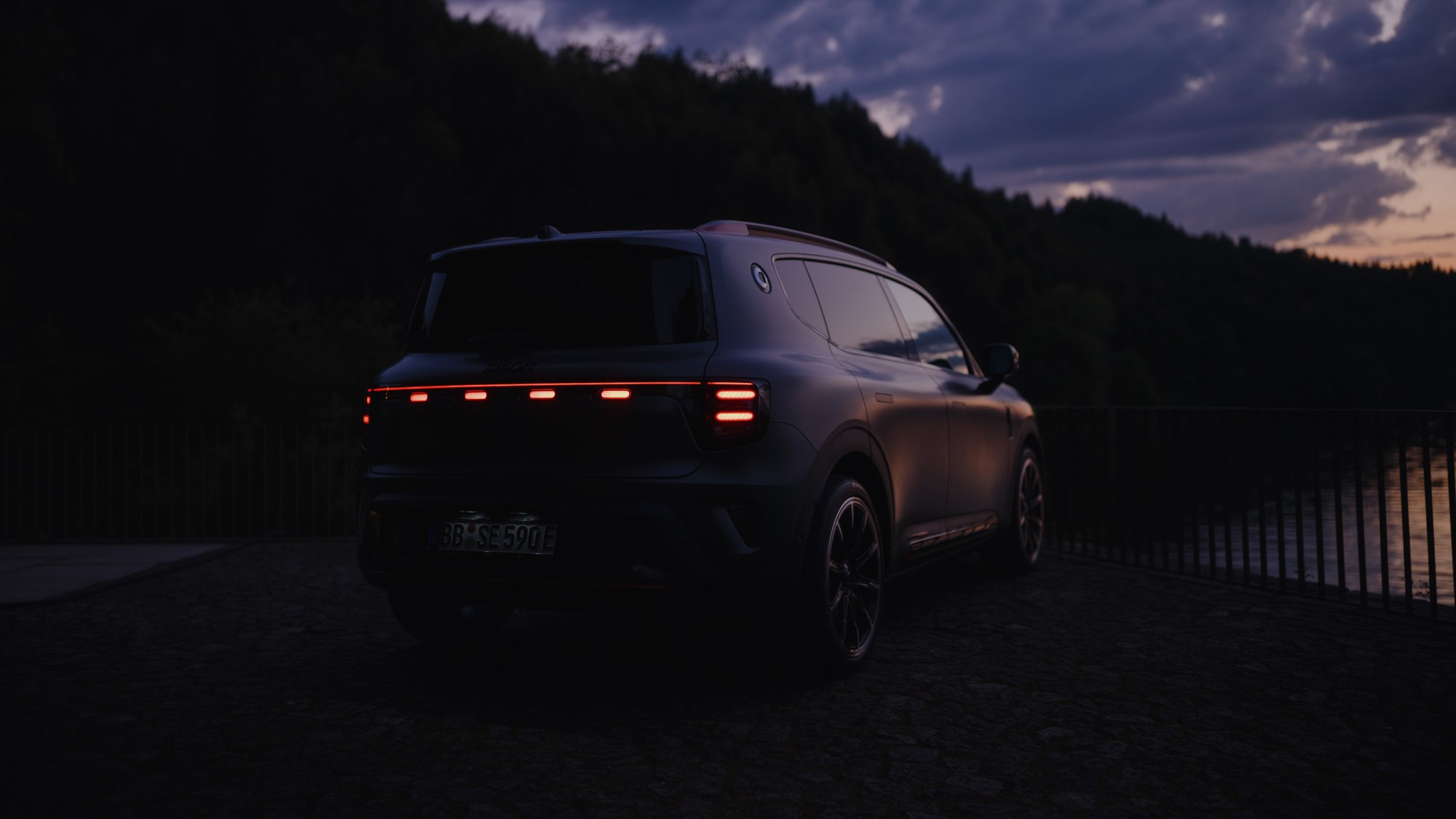
The sums looked good enough to jump into the D-segment, but according to both Xuan-Zheng Goh, head of product management at Smart Europe and Jason Allbutt, CEO of Smart UK, this is the biggest product you’ll see for a while from the brand.
And let’s get it out the way now, Smart execs say the brand follows the design philosophy of ‘the smallest possible footprint with the biggest possible space,’ and always has. With that in mind, the Smart #5 is huge, but keeps to the formula.
What are the specs?
The range-topping Brabus we tested has a 2378kg kerb weight and packs in 637bhp of power, but it doesn’t benefit from any chassis changes compared to the entry-level car. It uses a 100kWh battery (94kWh usable) for a WLTP range of 335 miles. 0-62mph is a ridiculous 3.8 seconds, though that’s partly down to a two-motor configuration. When do you need to top-up, you’ll be able to 400kW charge from 10% to 80% in less than 18 minutes.
The range starts with off with the Pro, which uses a smaller 76kWh battery (74.4kWh usable) for a range of 288 miles, and 0-62mph launch of 6.9 seconds. It’s rear wheel drive only and will take 30 minutes to charge from 10-80%, due to its slower 150kW charging.
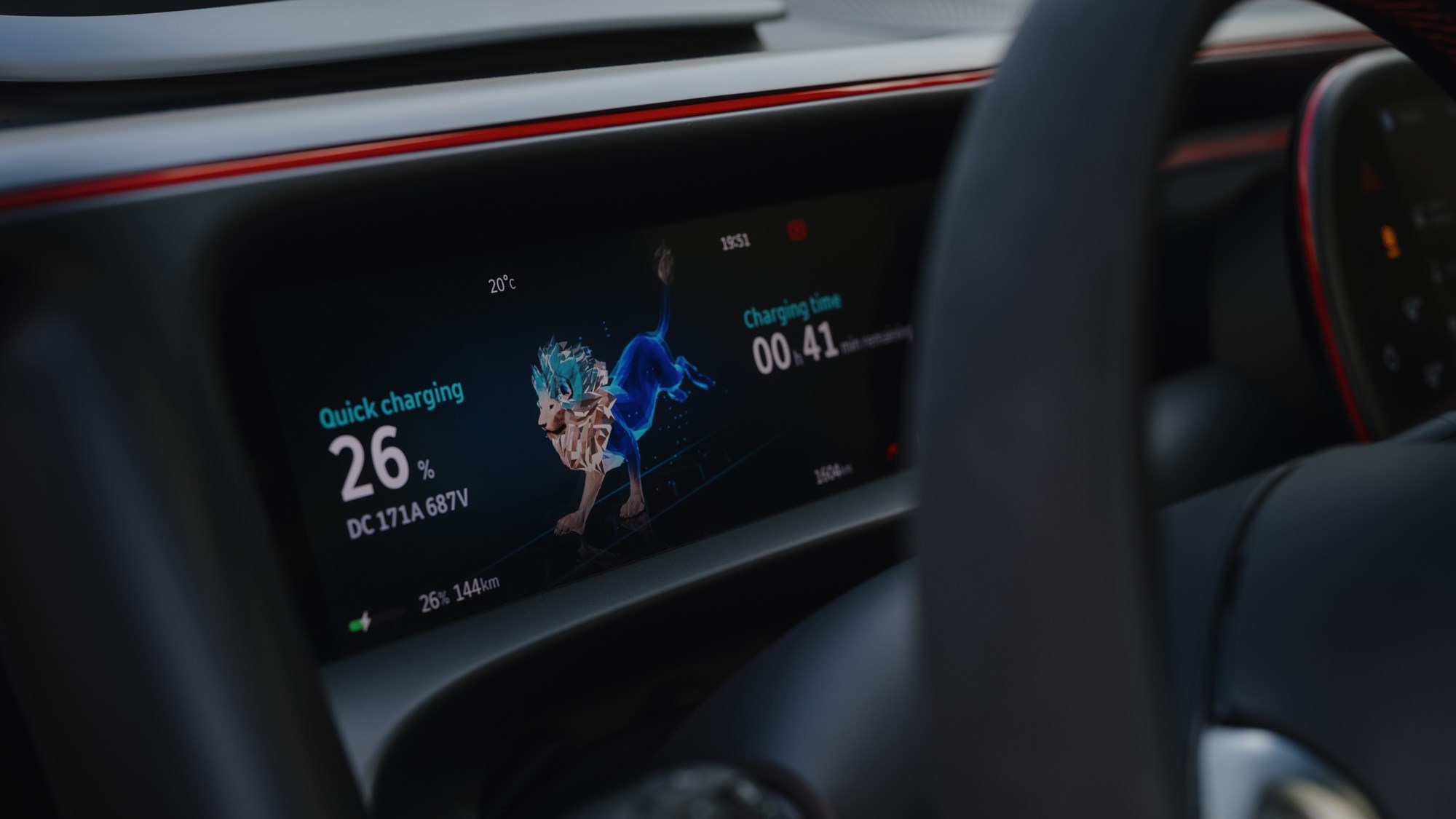
Between that is the Pro+ (bigger battery) Premium (biggest range along with the Pro+ of 366 miles) and then the Pulse and Summit. As you’d expect, the bundled features improve the further up you get, ending with the fully-laden Brabus.
What’s it like to drive?
That much power, weight and a passive suspension should be a recipe for disaster, but the #5 mostly gets away with it.
Like the #1 before it, the #5 benefits from accurate control weights and a ride that blends performance and comfort admirably. The steering in Comfort is light but accurate, and switching to Sport or the even full-blown Brabus mode adds some reassuring weight to the mix.
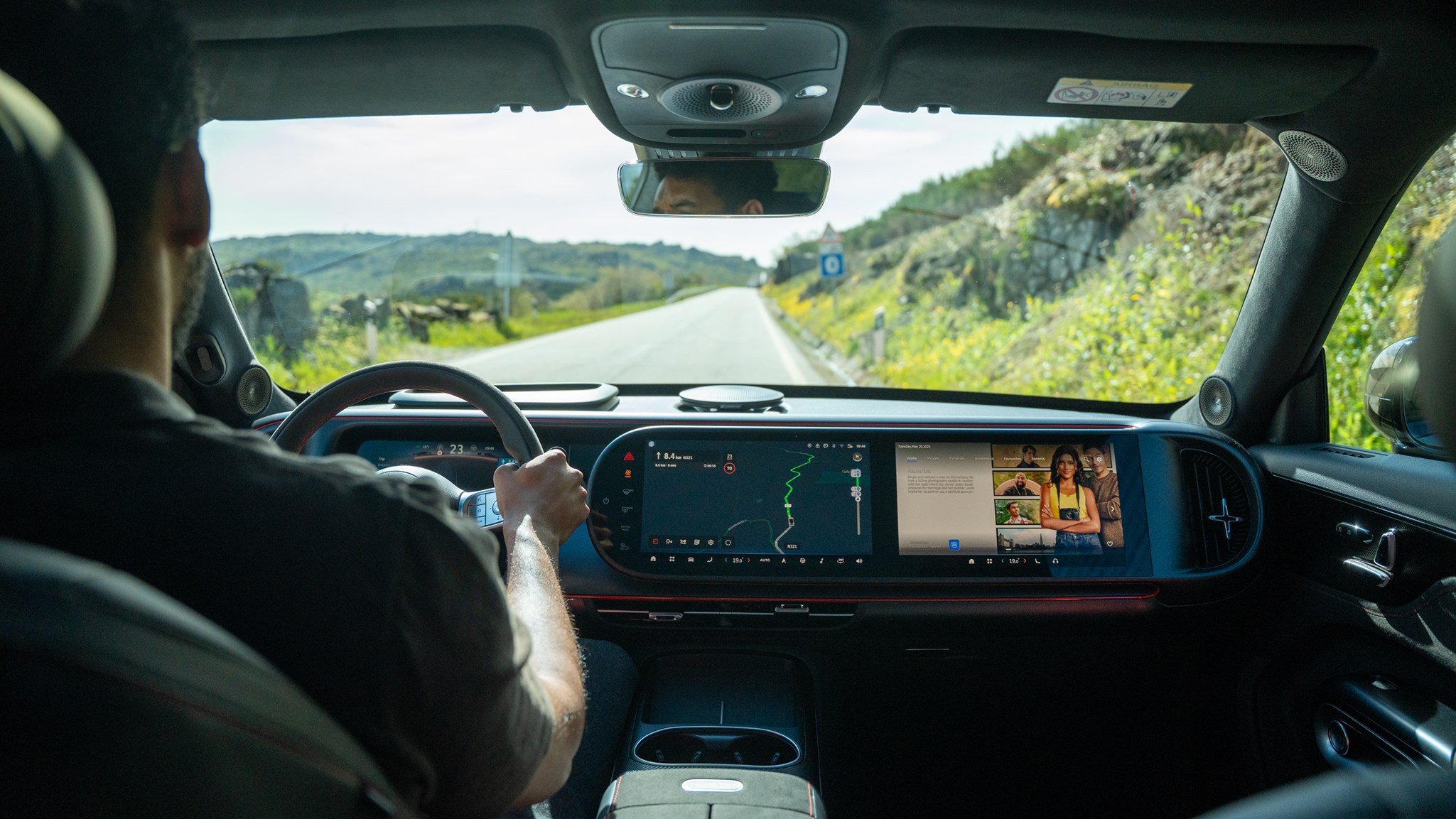
Place the #5 into corners at pace and you’ll get some tyre squeal but not the inevitable roly-poly mid-corner experience you’d expect. Instead, if holds up relatively well, with the front axle clawing you out of the corner before you really notice the tyres protesting. Drive in a less spirited fashion and the process is seamless.
The brakes too, are predictable and strong enough – and unlike some VW Group or Stellantis EVs, they don’t have a ‘mushy’ regeneration-powered top-end before they switch to the discs and callipers. Combine that with the intuitive steering and you’ll find yourself being able to trail brake into corners, swoop out of them and actually have some fun.
The final part of the equation is the power delivery, which is bordering on obscene on the Brabus we tried. It’s fast enough in Eco or Comfort modes, but flick to the spicier settings and the #5 has that alarming acceleration you often get with EVs. It’s relatively linear and addictive, and better yet, the chassis can handle it about 80% of the time. Be warned though, in some modes the Brabus will operate with the rear motors only, before suddenly adding the front axle motor with a jolt of acceleration.
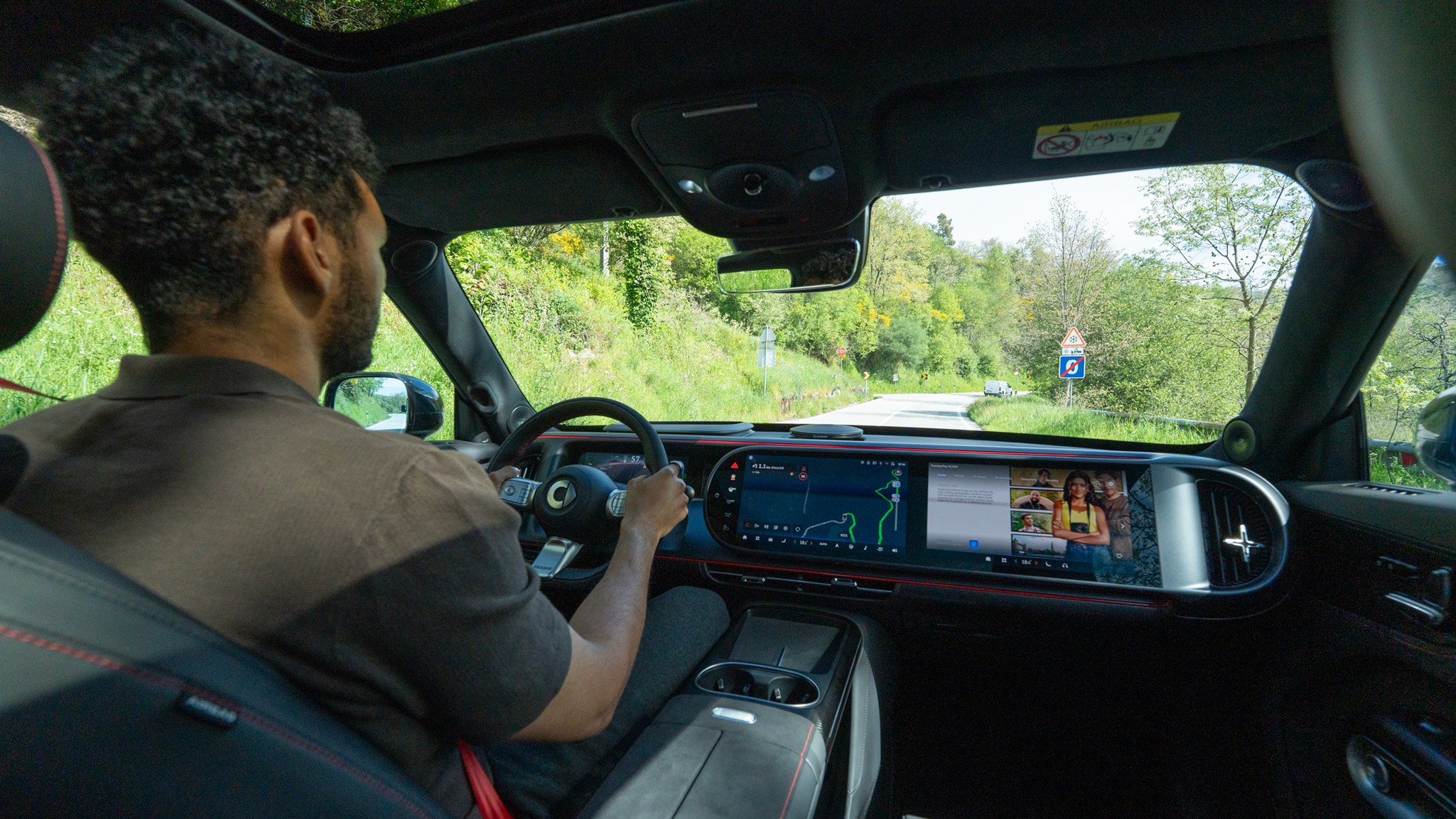
That performance does come with a few caveats; particularly around efficiency. We averaged around 2.4 miles per kWh, which isn’t great compared the Hyundai Inster for example, which managed a far thriftier 4.3 miles per kWh – and we drove both in a similar fashion.
What’s it like inside?
Somewhere between Teletubby land and a Mercedes C-Class. Smart says it’s aimed for ‘luxury saloon with SUV space,’ and we’d say it’s there or thereabouts. Front and centre are two huge 13-inch OLED screens – one for the passenger and one for infotainment. Smart has done a lot of work on the UX front, particularly focusing on persistent menu buttons, which it says are a neat halfway house beyond endless menus and real switchgear. Other bits, like the Drive Modes have dedicated haptic switches.
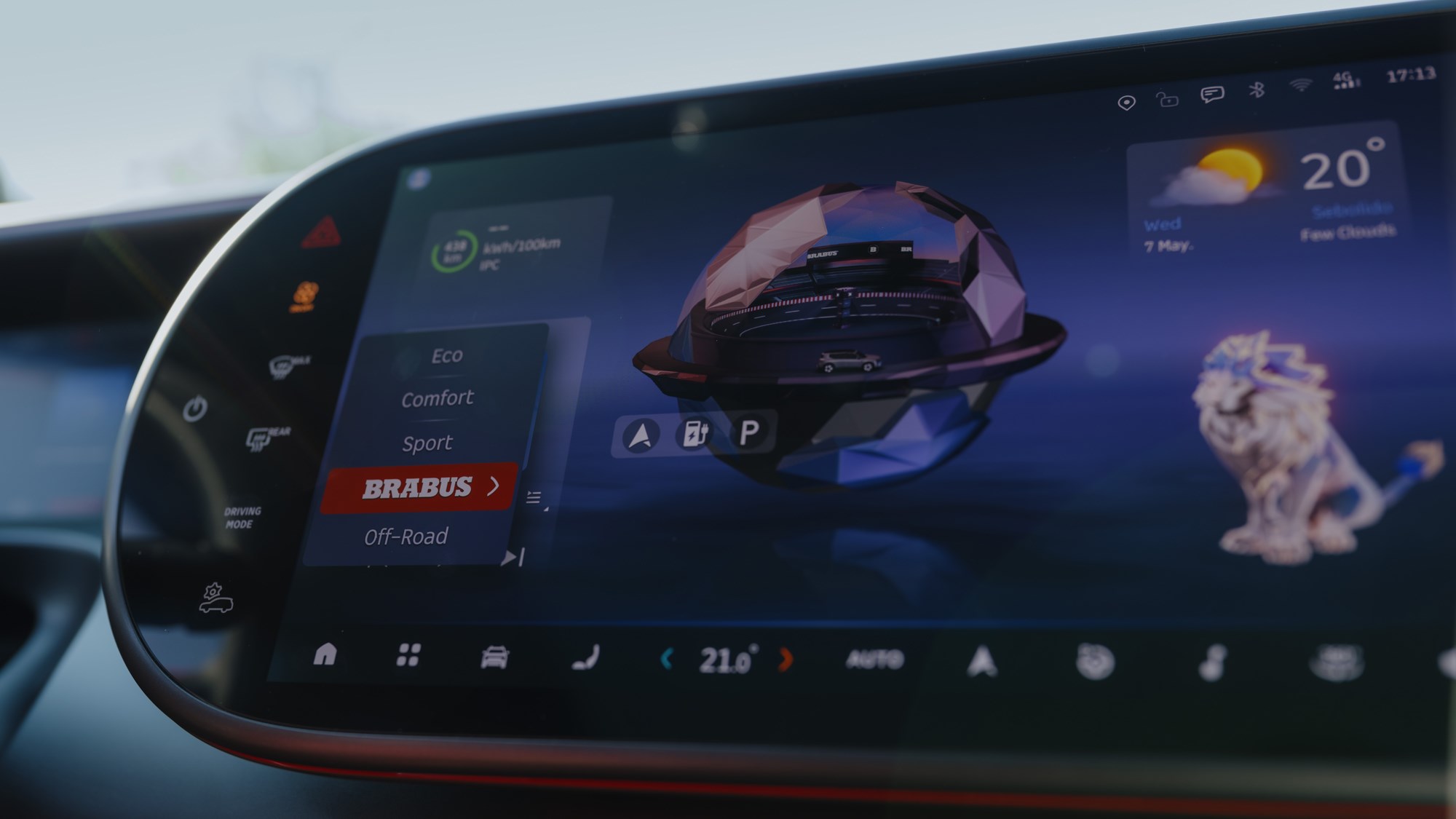
The materials of our Brabus-badged model were also of a good quality, with ambient lighting drenching most of the interior too. The seats were comfortable and supportive during all types of driving, and they could be adjusted with a switch on the door like a Mercedes. Less good was the Smart assistant which seemed to eavesdrop conversations a little too attentively, often interrupting – and ruining numerous video takes.
Smart was also keen to point out a new 20-speaker Sennheiser-badged system, capable of Dolby Atmos sound. Weirdly the proper Atmos effect is only available through Amazon Music (who has that?) as opposed to Spotify or CarPlay – but we were able to test the system with Apple Music. It’s loud, crisp and certainly a step above most in-car stems – even at higher volumes – but unless Smart sorts better app support for Atmos playback, we’ll never know how good it could sound.
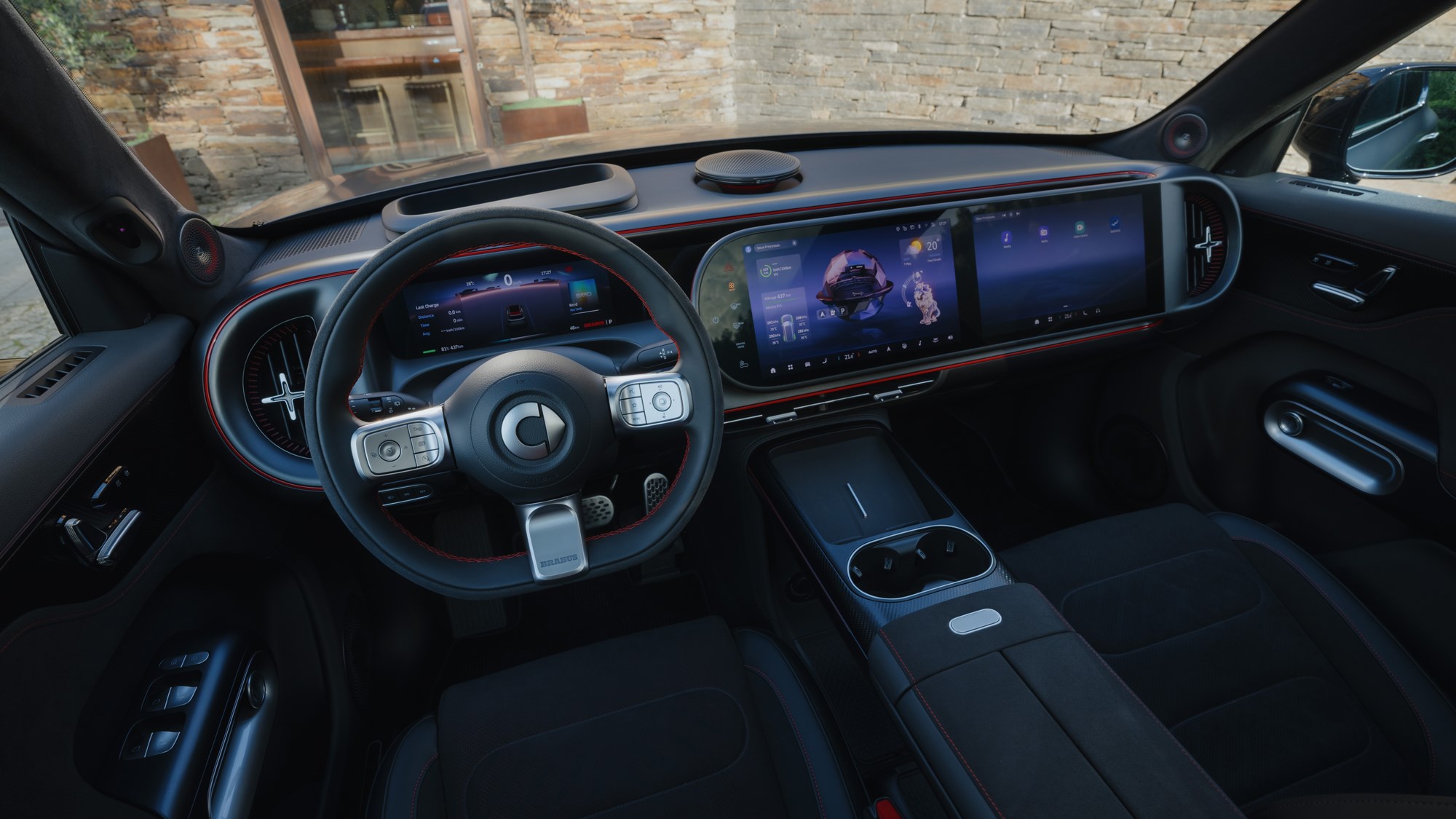
Elsewhere, rear passengers have a good amount of room, while the 1530-litre boot (all seats down) is a decent size. Less impressive is the frunk, which is super shallow on the two-motor models, but able to swallow a cabin bag-sized item on the single, rear-motor models.
Before you buy
Unfortunately, we only got to try the top of the range Brabus version of the Smart #5, which comes complete almost all the available options. CAR understands this model should start around the mid-£50k mark, though the entry-level Pro should start at just over £40,000.
An obvious competitor is the Skoda Enyaq, which weights in just below the £40,000 mark, with a punchy 359-mile range and decent 0-62mph sprint. It’s hard to compare the top-of-the-range Brabus to the entry-level Skoda, but it’s fair to say the latter is a more sensible, budget-conscious car – for better or worse.
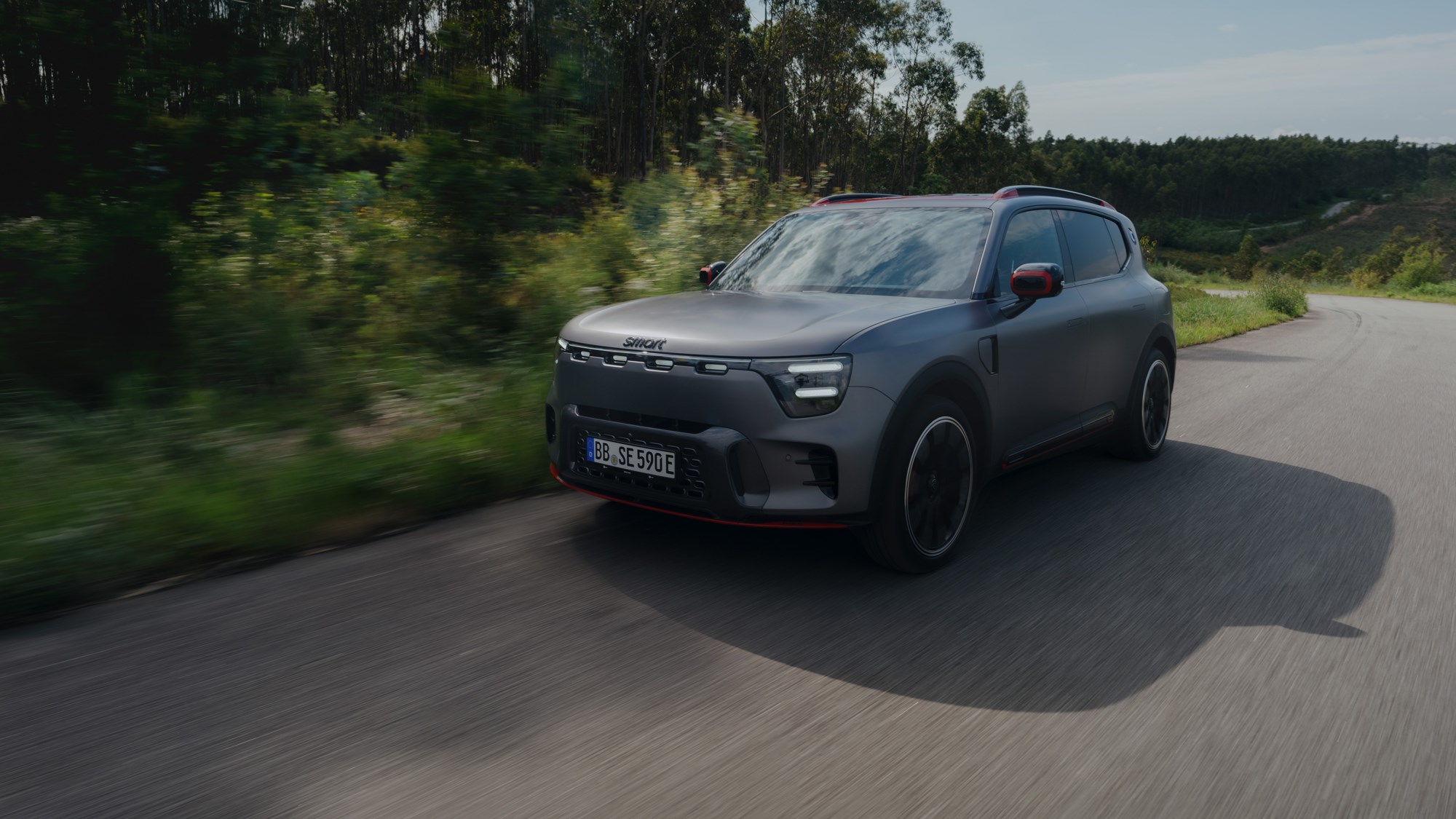
Verdict
Our first impressions of the Smart #5 are positive. It sets itself apart from the competition with styling that’s arguably better than parent company Mercedes, and it packs in a silly amount of power that it’s impossible not to have fun with.
The chassis itself isn’t always up to the challenge – fair enough given this is a D-segment family car – but its steering, brakes and throttle response will have you pushing it hard regardless.
Specifications are for Brabus model.